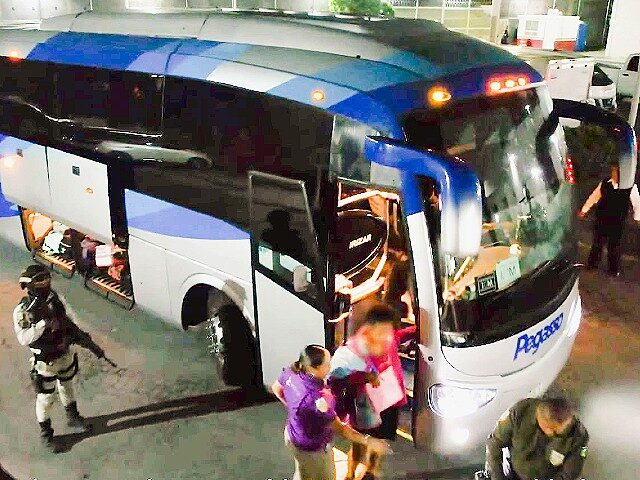Mexico’s National Institute of Migration (INM) announced the arrival of the first bus of migrants under its new “Secure Emerging Mobility Corridor” program. The program offers migrants free transportation, including meals and security from the Mexico/Guatemala border to ports of entry in the United States, where they will be admitted under the Biden-Harris CBP One app.
The first bus arrived early Wednesday morning in Reynosa, Tamaulipas, Mexico, located just across from McAllen, Texas. The bus carryied migrants from several Central and South American countries.
The government of Mexico provided the migrant’s travel under a program announced after a series of meetings between the Biden-Harris administration and Mexican President Andres Manuel Lopez Obrador. The binational immigration meetings, held in August, expanded the geographic region in Mexico where migrants could access the CBP-One smartphone application to schedule admission into the United States to claim asylum and secure release into the country.
The new corresponding transportation program allows authorities in Mexico to better manage the timing of the flow of migrants traveling into the country’s interior by scheduling the free travel service with the migrant’s appointment enter the United States under the CBP One program. Up to 1,450 migrants are released into the United States daily under the Biden/Harris CBP One asylum application. The migrants are not required to pass a credible fear interview, which is usually the first hurdle to a successful asylum claim. Congress never authorized this immigration program.
The buses depart from two southern Mexico cities, Villahermosa, Tabasco, and Tapachula, Chiapas, and arrive at one of eight designated U.S. land ports of entry that allow for the entry of more than 500,000 migrants to enter under the CBP-One smartphone application yearly.
The government of Mexico’s National Institute of Migration (INM) first announced the new program in a Spanish-language notice issued in early September, referring to the initiative as the “Secure Emerging Mobility Corridor.” Before the geographic expansion of service under the CBP-One smartphone application and the coordinated free bus program in Mexico, appointments could only be made in central and northern Mexico. The new coordinated appointment and bus program will allow the Biden-Harris administration to regulate the flow of migrant travel through Mexico.
The CBP One smartphone application is separate from the recently reinstituted Cuban, Haitian, Nicaraguan, and Venezuelan program, which allows up to 1,000 migrants to fly into the United States daily. Between the two Biden-Harris programs, more than 800,000 migrants are released into the United States yearly to pursue asylum claims.
Randy Clark is a 32-year veteran of the United States Border Patrol. Prior to his retirement, he served as the Division Chief for Law Enforcement Operations, directing operations for nine Border Patrol Stations within the Del Rio, Texas, Sector. Follow him on X (formerly Twitter) @RandyClarkBBTX.

COMMENTS
Please let us know if you're having issues with commenting.